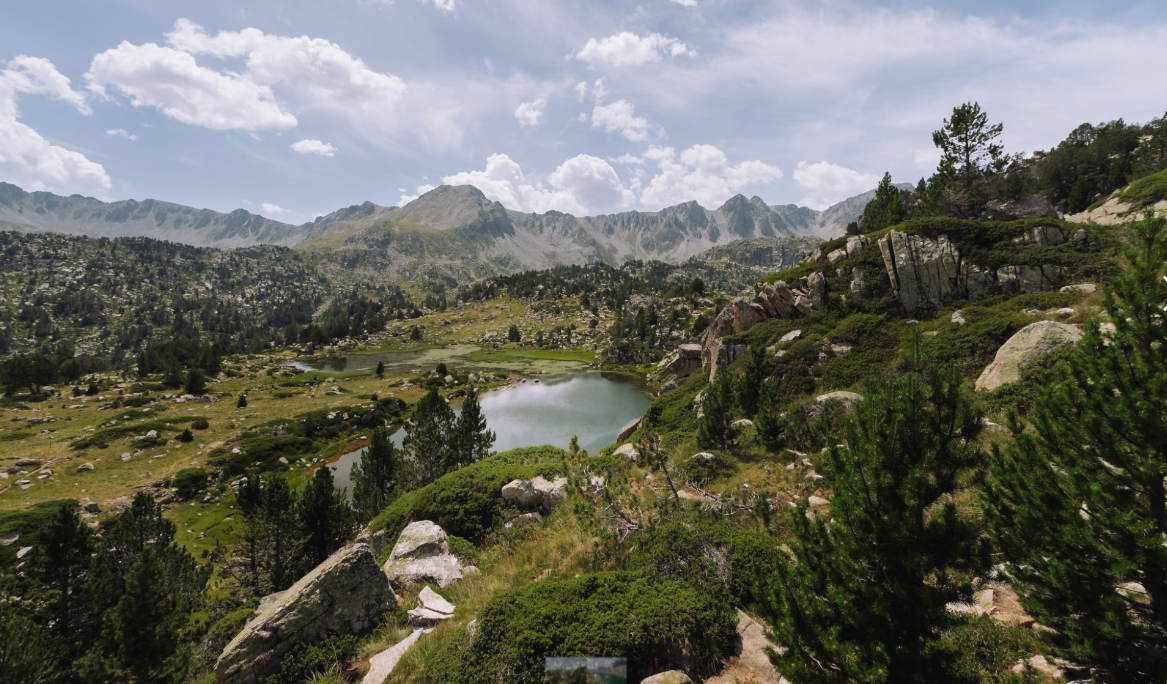Capturing tiny droplets of water from fog and using them to restore areas affected by extreme drought and desertification is the aim of the European LIFE Nieblas project. The journey begins on the mountain ridges of the Canary Islands, where the trade winds favour the sea of clouds that generates the precious fog and horizontal rainfall characteristic of the Atlantic islands.
The initiative involves working with an innovative fog collector and three new reforestation systems based on collecting water from the tiny droplets in suspension. The aim is to recover the forests and aquifers of 35 hectares in two areas of the island of Gran Canaria (Barranco de la Virgen and Selva de Doramas) and, subsequently, to implement the experience in the Mediterranean basin and in Portugal, as a practice against the effects of climate change.
The intervention has a 4-year horizon and a budget of 2.1 M €, the most ambitious LIFE project implemented in Gran Canaria. CREAF is working together with the Cabildo de Gran Canaria, the Canary Islands public company Gesplan, the Canary Islands Institute for Agricultural Research, the Canary Islands Technological Institute, the University of La Laguna, the Heredad de Aguas de Arucas and Firgas and the Intermunicipal Community of Viseu Dão Lafões in Portugal, where the first results achieved in Gran Canaria will be tested.
215,000 litres of water for 20,000 trees
The challenge is to capture 215,000 litres of fog and dew water per year, to repopulate 35 hectares with 20,000 laurel forest trees that have been burnt and are at high risk of desertification. This will consolidate a forest mass and recover the water supply function of the former Doramas Forest in Gran Canaria. The reforestation will be carried out with endemic species of the Canary Islands and typical of the ‘laurisilva’ forest, such as the Canarian beech and holm oak (Myrica faya, Ilex canariensis), strawberry trees (Arbutus unedo), ‘barbusanos’ (Apollonias barbujana) and other ‘laurisilva’ forest species, which will also benefit from the Cocoon autonomous irrigation system, successfully tested as part of the European LIFE The Green Link project led by CREAF.
The challenge is to capture 215,000 litres of fog water per year to repopulate with 20,000 'laurisilva' trees 35 hectares that have been burnt and are at high risk of desertification. The experience will also be implemented in the Mediterranean basin and in Portugal.
The Cocoon are biodegradable tanks that provide permanent capillary irrigation, a water chamber that also reduces competition with herbaceous plants and can make the difference between the survival or death of the specimen. The proposed solution has been implemented in Catalonia, the Canary Islands, Valencia, Almeria, Portugal, Italy and Greece, among many other places.
“We restore habitats of community interest that are home to plant and animal species unique in the world and that have a direct impact on the people who live on the island. We also propose innovative reforestation methods, raise awareness of the importance of forest cover and water resources, and promote knowledge transfer between universities and companies”, in the words of CREAF researcher Vicenç Carabassa.
A system that feeds back
One of the key interventions of LIFE Nieblas is the installation of individual fog catchers (simple devices that condense humidity to provide greater irrigation to the plant), to intensify the positive results of the whole intervention. The ultimate goal is for the new laurel forests to survive on their own without irrigation for a year and a half and to capture the moisture carried by the fogs that will have made their growth possible. This is exactly the function the Doramas Forest fulfilled: the vegetation itself will capture the fog it needs.
And not only that, since the water captured by the forest has a capacity to infiltrate into the ground 5 times greater than that of rain when it falls directly on the ground. Therefore, this new-generation forest will bring springs back to life and favour the progressive recovery of aquifers, essential for supplying farms, livestock and population without the need to drill wells or galleries. “With this initiative, we are tackling reforestation in a more viable and effective way, acting in areas that are particularly vulnerable to climate change and desertification,” says Vicenç Carabassa.

With this initiative we address reforestation in a more viable and effective way, acting in areas particularly vulnerable to climate change and desertification.
VICENÇ CARABASSA, researcher at CREAF.
Therefore, the great challenge is to transform an area highly degraded by centuries of logging and massive extraction of water from the aquifers, as well as a devastating fire, into a model of environmental recovery. The opportunity to initiate the intervention in Gran Canaria lies in the fact that 90% of its land is under great water stress, due to reduced rainfall and with a high to very high risk of desertification.







